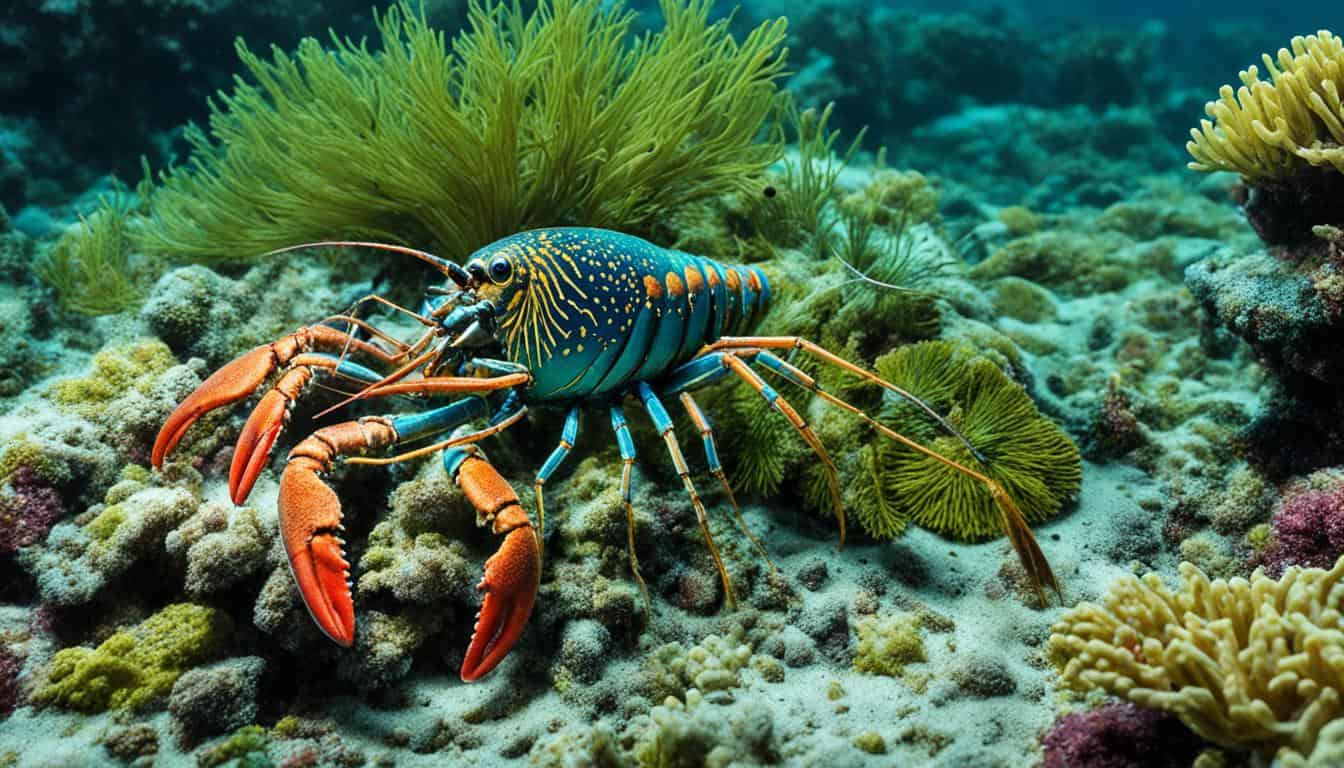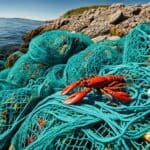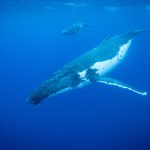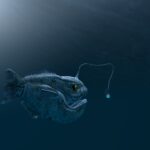For those interested in marine life, knowing where lobsters live is key. These creatures live mainly on the ocean floor. They love the cold, salty waters there.
Ever curious about lobster habitats? They prefer certain temperatures and salinity levels. These conditions are between 15-18°C (59-64°F) and 20-25 ppt salinity. Let’s explore more about their living conditions and where they can be found along the Atlantic coast of North America.
Understanding Lobster Habitats
Lobsters live in many places, but they love benthic regions at the ocean floor the most. These areas are key for their survival, giving them shelter and food. The type and features of these habitats greatly affect lobster health and numbers.
What are Benthic Environments?
Benthic environments are the bottom layers of the ocean, including the sediment and just below it. This is a vital place for lobsters. They live among rocks, corals, and other structures, which protects them and helps them find food.
Importance of Substrate Types
Substrate types are very important in lobster habitats. Things like sand, rocks, and mud make these places rich and complex. For example, rocky areas give lobsters many places to hide, while sandy bottoms help with finding food.
This variety of substrates is good for lobsters. It helps them grow and thrive by offering many places to live and find food.
Where do lobsters live?
Lobsters live in different places along the coastlines. Knowing where they live helps us understand marine life better. Factors like temperature and salinity affect their homes.
Geographical Locations of Lobsters
The American lobster lives along North America’s eastern coast. This area stretches from Newfoundland to North Carolina. It’s perfect for lobsters because of the food and shelter available.
The coastlines have rocky areas and seaweed. These provide protection and places for small lobsters to hide.
Temperature and Salinity Preferences
Lobsters like certain temperatures and salinity levels to survive. They prefer temperatures between 15-18°C and salinity of 20-25 parts per thousand (ppt). These conditions help them grow, eat, and reproduce.
Small lobsters stay in shallow areas with lots of plants. But, big lobsters go deeper sometimes. They come back to shallower areas for breeding.
Lobster Natural Environment Characteristics
Lobsters live in specific places that are perfect for them. These places have features that help lobsters survive and grow. Knowing about these places helps us understand how lobsters live and why they do well there.
Cold and Salty Ocean Waters
The cold and salty ocean waters are key to lobster life. These conditions are important for lobsters to stay healthy and grow. The cold helps them use less energy, and the salt keeps their bodies balanced.
This balance of temperature and salt is crucial for their survival. It also affects how well they can reproduce.
Supporting Ecosystems for Lobsters
Lobsters also rely on their surroundings to survive. Supporting ecosystems for lobsters include things like the ocean floor, rocky areas, and kelp forests. These places offer food, shelter, and places to breed.
They also help keep the ocean healthy, which is good for lobster populations. This diversity makes their environment rich and supports all stages of their life.
Lobster Dwelling Places
Lobsters live in unique places that give them shelter and resources. These spots are key to understanding their life under the sea. They use crevices and rocky shelters to stay safe from predators. These spots are crucial for their survival in deep ocean waters.
Common Structures Used by Lobsters
Some of the most common places lobsters call home are:
- Crevices: Natural openings in rocks where lobsters can hide and live.
- Burrows: Digged out spaces that are safe retreats.
- Rocky Shelters: Piles of rocks that make great hideouts, helping lobsters avoid threats.
These spots help protect lobsters from predators and keep them moist. They also make it easier for lobsters to find food and move around.
Hiding Spots in Rocks and Weeds
For smaller lobsters, hiding in rocks and weeds is key. In coastal areas, they often hide in seaweed and plants. This helps them blend in with their surroundings and stay safe from bigger sea creatures. These areas are full of food and provide a secure place for lobsters to live.
Learning about where lobsters live helps us protect them better. It shows us how important it is to keep their homes safe. This knowledge helps us understand their behavior and why we need to protect their habitats.
Lobster Habitat Locations
Lobsters live in many places, but some areas are perfect for them. Knowing where they live helps us fish sustainably and keep the ocean healthy.
Regions with Highest Lobster Populations
The North Atlantic is home to many lobsters. Places like Long Island Sound and around Newfoundland are great for them. Maine is especially important, catching about 80% of U.S. lobsters. We must protect these areas for the future.
Commercial Fishing Areas
Most lobster fishing happens in the North Atlantic. This fishing helps local economies and shows why fishing must be done right. Massachusetts and parts of New Jersey work with Maine to manage lobster fishing. We need to keep improving how we fish to keep these areas good for lobsters.
| Region | Characteristics | Commercial Fishing Importance |
|---|---|---|
| Maine | High lobster abundance; diverse ecosystems | 80% of U.S. lobster catch |
| Massachusetts | Varied depth and temperature; rich marine life | Significant regional earnings from lobster sales |
| New Jersey | Accessible fishing zones; supportive habitats | Growing commercial interest |
| Newfoundland | Cold-water environment; protective currents | Key player in Canadian lobster exports |
Lobster Ecosystems
Lobsters play a big role in marine ecosystems. They are both hunters and hunted, keeping the balance in these underwater worlds. By understanding their role, we see how vital they are for the health of the ocean.
The Role of Lobsters in Marine Ecosystems
Lobsters are key to marine ecosystems. They eat fish, mollusks, and other crustaceans, which helps control their numbers. This keeps the ecosystem diverse and healthy.
Interactions with Other Species
Lobsters help with nutrient cycling in their homes. Their digging helps plants and animals by turning over the soil. Healthy lobster populations are important for many food webs and ecosystems.
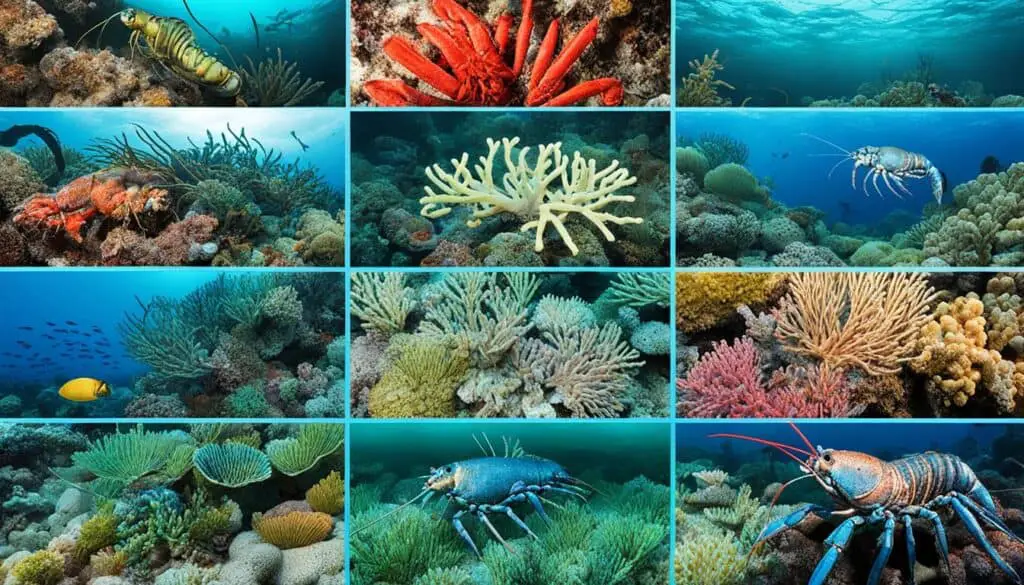
| Aspect | Role of Lobsters | Impact on Ecosystems |
|---|---|---|
| Predator-Prey Relationships | Control populations of herbivores and other marine species | Promotes biodiversity and balances ecosystem health |
| Nutrient Cycling | Aid in the decomposition of organic matter | Enhances nutrient availability for marine plants |
| Burrowing Behavior | Creates habitats for other species | Improves sediment quality and stability |
Lobster Living Conditions
Understanding lobster living conditions is key to their survival and growth in the ocean. These crustaceans prefer certain depths and water conditions. This affects how well they can live.
Lobsters live in shallow coastal areas and deep waters. The best depths for them vary with their age and size. Adult lobsters usually stay in depths from 50 to 400 feet. This is where they find enough food and shelter.
Ideal Depths and Water Conditions
The best depths for lobsters depend on temperature, salinity, and suitable habitats. They do well in cold waters with the right salinity. A stable environment is crucial for their growth and ability to reproduce.
Knowing their preferred living conditions helps us understand lobster populations better.
Impact of Pollution on Lobster Habitats
Pollution is a big threat to lobster habitats, putting their survival at risk. Dirty waters can harm lobster health and their ability to reproduce. Pollutants like heavy metals and plastics affect not just lobsters but the whole ecosystem they live in.
Understanding this impact is key to protecting these important sea creatures. We need effective conservation plans to help them thrive.
FAQ
Where do lobsters primarily live?
Lobsters live mainly on the ocean floor. They like places with sand, rocks, and mud. These spots offer them shelter and food.
What are the preferred habitats for lobsters?
Lobsters like cold, salty waters. The ideal temperature is between 15-18°C (59-64°F). They also need salinity levels of 20-25 ppt. They choose areas with good shelter and food.
What types of environments do lobsters inhabit?
Lobsters live in many places, mostly on the ocean floor. They like areas with rocks, sand, and mud. These places give them places to hide and find food.
Where are the highest lobster populations found?
The most lobsters live along North America’s eastern coast. Maine has about 80% of the U.S. lobster catch.
How do water conditions affect lobster habitats?
Cold and salty waters are perfect for lobsters. They help with growth, metabolism, and keeping the right balance of salt.
What kind of structures do lobsters use for shelter?
Lobsters use places like crevices, burrows, and rocky spots for shelter. These help them hide from predators and keep moist.
What role do lobsters play in marine ecosystems?
Lobsters are important in marine ecosystems. They eat and are eaten by other sea creatures. They help keep their homes healthy by cycling nutrients.
How does pollution impact lobster living conditions?
Pollution is a big problem for lobsters. It can make their homes unhealthy and hurt their ability to reproduce. This is because pollutants can change the quality of the water.

